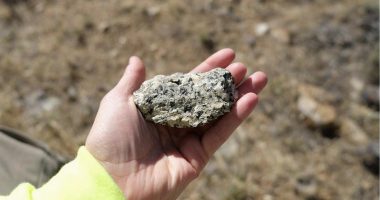- Recent drilling at Galileo Mining’s (GAL) Callisto discovery returns both the shallowest and deepest intersections to date
- Reverse circulation drilling at the WA-based discovery returned significant grades at just 110 metres below surface, indicating the potential for more shallow mineralisation
- Today’s results also include the deepest mineralisation intersected with assays of three metres at 1.62 g/t 3E, 0.2 per cent copper and 0.21 per cent nickel from 255 metres
- Mineralisation is open in all directions and now extends over 300 metres across strike on the southern and central lines and over 200 metres across strike on the northern line
- Galileo shares are down 2.67 per cent to $1.10 at 10:53 am AEST
Galileo Mining (GAL) has received “positive” assays from a further eight holes drilled at the Callisto palladium-platinum-gold-copper-nickel discovery in Western Australia.
The Callisto discovery, which lies within the company’s Norseman project, has been the subject of a second reverse circulation (RC) drilling program that aims to follow up on the initial program and test the “true extent” of mineralisation in the area.
The latest results include 28 metres at 1.20 grams per tonne (g/t) 3E (platinum, palladium and gold), 0.25 per cent copper and 0.26 per cent nickel from 118 metres in hole NRC285 and 25 metres at 1.18 g/t 3E, 0.2 per cent copper and 0.25 per cent nickel from 132 metres in hole NRC287.
These holes returned the shallowest intersections to date, which the company said indicates the potential for more shallow mineralisation to the west and along strike to the north.
This batch of results also includes the deepest mineralisation intersected to date, coming from hole NRC278.
The hole returned 18 metres at 1.02 g/t 3E, 0.2 per cent copper and 0.24 per cent nickel from 214 metres, and three metres at 1.62 g/t 3E, 0.2 per cent copper and 0.21 per cent nickel from 255 metres.
“The Callisto discovery continues to grow with today’s assay results including both the shallowest and deepest mineralisation intersected to date,” Galileo Managing Director Brad Underwood said.
“With no known outcrop and over five kilometres of prospective strike, we consider that a significant opportunity exists for additional discoveries at shallow depths.”
Mineralisation in the area is open in all directions and now extends over 300 metres across strike on the southern and central lines and over 200 metres across strike on the northern line.
The 10,000-metre program is continuing and assays from four RC holes are pending.
Galileo shares were down 2.67 per cent to $1.10 at 10:53 am AEST.





